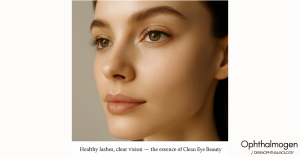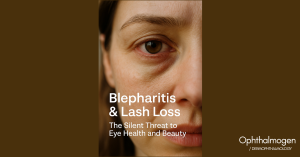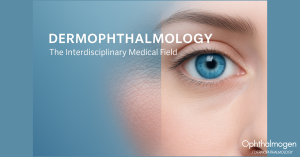
Introduction
Dark circles are among the most common aesthetic complaints worldwide. For decades, they were seen solely as a cosmetic issue caused by genetics, lack of sleep, or stress. Today, science shows that dark circles are often a medical symptom, reflecting eye or nasal inflammation, poor microcirculation, and eyelid dysfunction.
Historical Perspective
Since antiquity, “shadows” under the eyes were regarded as signs of illness or exhaustion. Hippocrates himself described “nasal afflictions” that influence the eyes, recognizing the unity of nose and eyes.
In recent years, dark circles have been managed primarily with cosmetic approaches such as concealers, dermal fillers, and laser therapies. Today, however, Dermophthalmology identifies the underlying pathophysiological mechanisms and introduces therapeutic strategies that integrate ocular health with aesthetic outcomes.
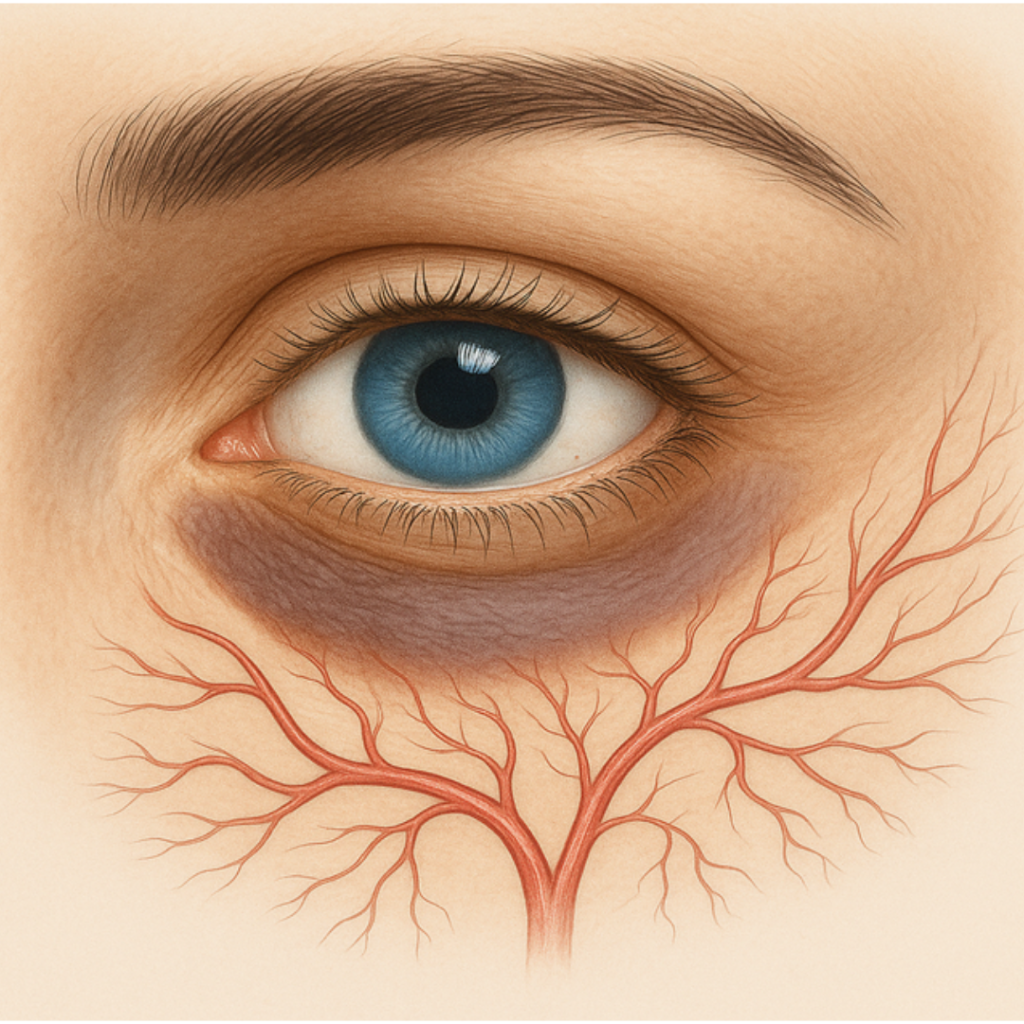
Medical Causes of Dark Circles
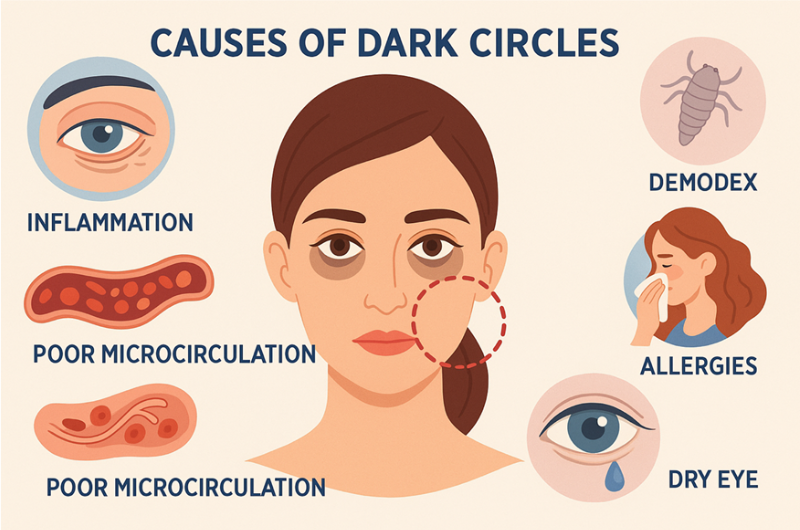
The most common pathological causes include:
- Allergic rhinitis and conjunctivitis. The term allergic shiners describes dark circles caused by chronic nasal congestion. Allergic rhinitis affects 20–30% of adults and an even higher percentage of children. Venous stasis, lymphatic edema, and frequent eye rubbing all intensify the shadows.
- Blepharitis and regulation. Chronic eyelid inflammation affects 20–40% of the population, increasing with age. Demodex mites are almost universal in adults with chronic blepharitis.
- Dry eye disease. Officially recorded in 5–30% of the population, but in specific groups—postmenopausal women, contact lens wearers, screen users, and chronic eye drop users—it can reach up to 50%. Ocular surface inflammation reduces circulation and accentuates dark circles.
- Glaucoma and eye drops. Long-term use of anti-glaucoma drops causes irritation and periocular inflammation, leading to heavier-looking circles.
- Presbyopia and aging With age, microcirculation and tissue elasticity decrease. Fatigue of the ciliary muscle is mirrored in the eyes.
- Nasolacrimal duct dysfunction While official studies suggest 3–6% of adults are affected, the true figure may exceed 10%. Blockage causes swelling and under-eye shadows.
Lifestyle Factors
Dark circles are worsened by lack of sleep, poor diet deficient in omega-3, lutein, and zeaxanthin, chronic stress, and excessive screen use. These factors rarely cause dark circles alone but amplify underlying medical causes.
Existing Cosmetic Solutions
Popular cosmetic solutions include creams with caffeine or vitamin K, hyaluronic acid fillers, and laser treatments. However, without addressing underlying medical causes, results are often short-lived.
- Thermal therapy with Ophthalmogen Eye10 EYE10, to relieve congestion of the Meibomian glands.
- Spray:Ophthalmogen Spray for Demodex& bacteria.
- Microcirculation: massage with Ophthalmogen Gel.
- Cleansing:Naviblef Daily/Intensive Care.
- Hydration:Visionlux Plus, Flora Vision Spray.
- Supplements: ALLVITA EYES, omega-3, lutein, zeaxanthin, mesozeaxanthin Mesozeaxanthin.
- OTOSAN Nasal Wash with hyaluronic acid:Daily cleansing, hydration, and tissue regeneration of the nasal cavity
- OTOSAN Nasal Spray Forte:Daily natural decongestion of the nose and improvement of breathing (for best results, spray after nasal cleansing)
- OTOSAN Nasal Baby : Daily natural decongestion ofthenose and improvement of breathing for pregnant women and children < 3 years old
60-Second Screening
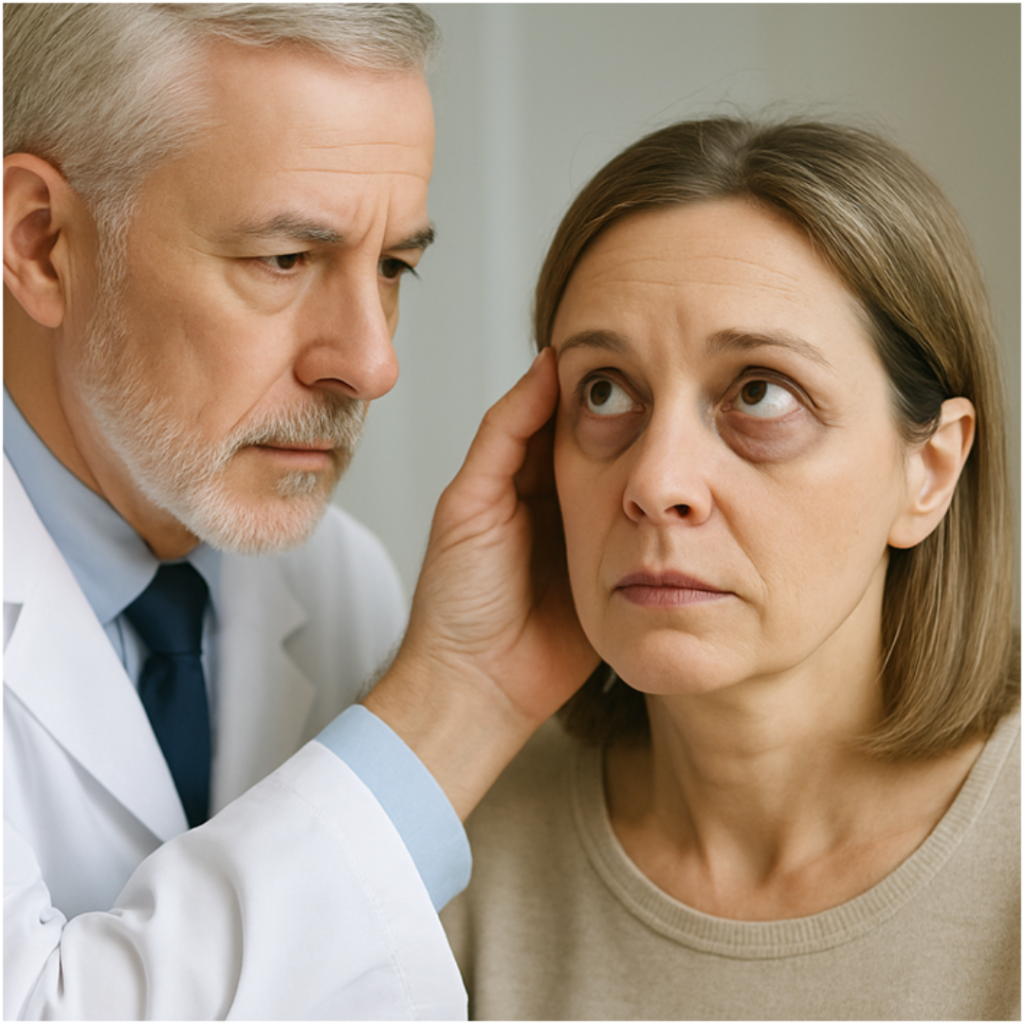
Red Flags – Πότε να δείτε γιατρό άμεσα
If you answer “yes” to three or more, your dark circles likely have a medical basis:
- Do you wake up with swollen eyelids?
- Do you suffer from nasal congestion and bruised-looking circles?
- Do your eyes burn or water with screen use or makeup?
- Do you often rub your eyes?
- Do you notice white flakes on your eyelashes?
- Do you carry tissues for constant tearing?
Case Studies
- 28-year-old woman with blepharitis: after 4 Naviblef & Ophthalmogen productsdark circles significantly improved.
- 47-year-old man with allergic rhinitis: OTOSAN + Ophthalmogen productsreduced swelling and brightened the eyes.
- Glaucoma patient: continued anti-glaucoma drops, but with Ophthalmogen products hygiene maintained comfort and healthier appearance.
- Sudden, one-sided swelling.
- Severe redness or pus.
- Acute loss of vision or double vision.
- Fever or systemic symptoms.
- Recent trauma or eye surgery
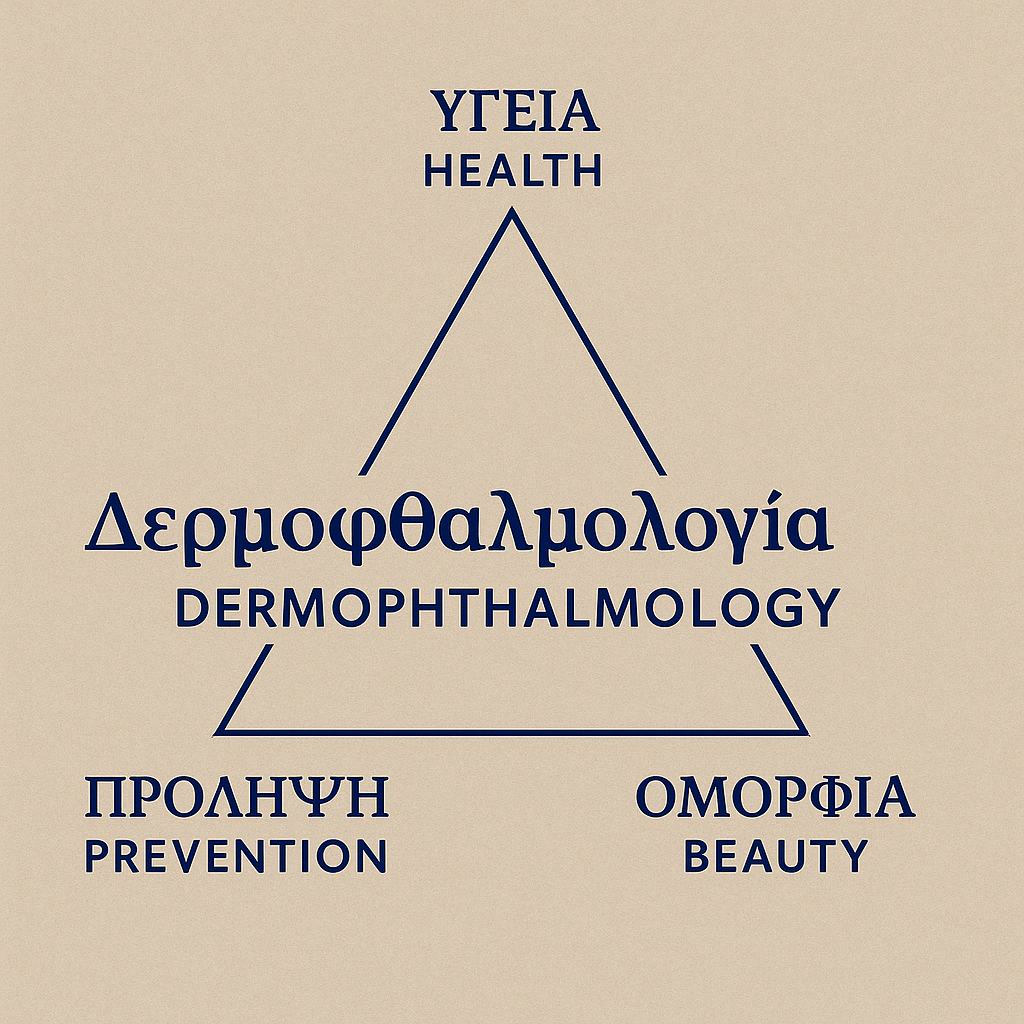

Conclusion
Dark circles are not merely a cosmetic concern. They represent a clinical sign indicating inflammation, congestion, and impaired microcirculation. Dermophthalmology introduces a novel approach:
- Treat eyes and nose together.
- Combine hygiene, prevention, and aesthetics.
- Support with specialized products (Ophthalmogen, Naviblef, EYE10, Visionlux Plus, Flora Vision, Allvita Eyes, OTOSAN, Dermalife520).
The result: a gaze that is not only brighter and more youthful, but also healthier.
Η Δερμοφθαλμολογία είναι η νέα ιατρική κατηγορία που παρουσιάσαμε




